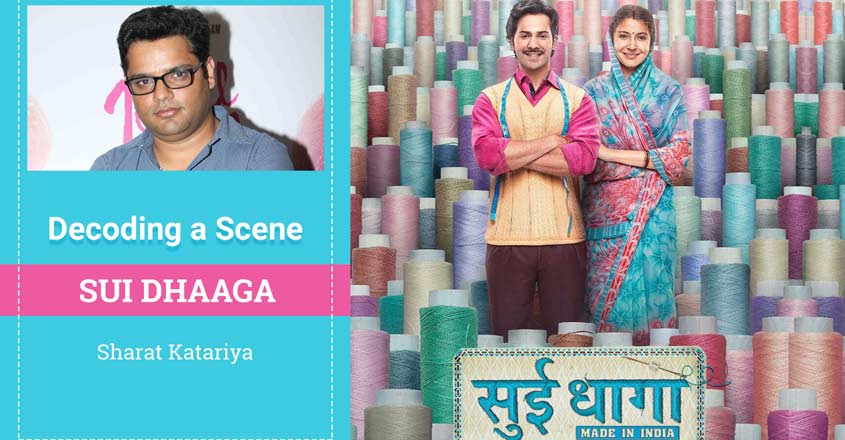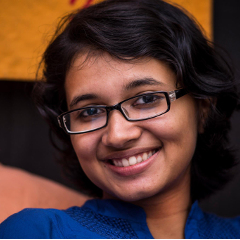Decoding a scene | Anil Mehta's take on the crucial 'stitch' in 'Sui Dhaaga'

Mail This Article
Sharat Katariya's Sui Dhaaga: Made in India is about a young couple who attempts to set up a fashion business in rural India and the challenges they face.
Mamta (Anushka Sharma) helps Mauji (Varun Dhawan) to free himself from his abusive employer and encourages him to start a tailoring business.
The opening scene in the film looks like a single shot. Cinematographer Anil Mehta deployed his digital and camera skillsets to 'stitch' the shot without making it evident.
The ace cinematographer talks to Onmanorama on how he managed to do the long, seemingly single shot scene.
The idea of the opening of the film in a single shot happened way before the shoot. “We had just barely come back from the recky and discussing how to treat the film. The idea was thrown at us by the director who might have got inspired through the film Birdman,” he said.
Set in Chandheri, the team rented a small house and the size of the rooms was tiny. “One room was 10*10 and another was 10*12. Then there was a courtyard and kitchen, which was 8*10,” Mehta said.
It was very tough to fit in even the camera gear in such a space. The challenging part was to try and make a single shot of the entire opening scene in which all the characters of the family are introduced.
“It was challenging even to visualise it. The advantage was that I had the location in my head. Varun gets up from the terrace and the whole shot was on a steady cam. Steady cam operator carries the camera on a device that makes the camera move relatively smoothly. I had to come down from the terrace to the ground floor. The shot began on a crane and the steady camera operator had to step off the crane which is a delicate operation. He had to then walk through the entire house. Eventually we did pull it off,” Mehta said.

The team visualised everything in the Mumbai office. While they were visualising it they called up the production designer, who was already in Chanderi, to tell her if they could carve windows in the kitchen wall of the house. The designer had to negotiate with the house owners and managed to persuade them by saying that they would restore it in a way that looks like it's a part of the house that they already live in. The windows were carved and shutters for the house that matches the ones that they already have had to be brought in.
The opening scene is a seemingly single shot in which the steady cam walks through pretty much the entire space of the house and introduces all the characters. Within the single shot there is a time transition. It starts with Varun waking up and later leave for work. A normal scenario would take 30- 45 minutes. But the crew captured it in one and a half minutes of film time.
“That time transition is seen because we are in an open terrace scenario. So we go from pre sunrise to Sun already being out in the seemingly single shot. It required one little stitch which happens when we cross the kitchen wall. We go after introducing Anushka washing vessels and we go across the kitchen wall and that's when we did the stitch as that's when we needed the time transition - from dawn to early morning. And we needed the time for the actors to dress. Going from completely just woken up to be in his shirt and trousers to go to work was what the actor had to go in the transition. And this was possible only because of digital technology. It could have been much more difficult to do otherwise,” Mehta said.
“Every time we set out for a shooting, we try new ways to make it interesting. Simplest thing for a scene like this would be a montage cut. That's done to death. I believe that if you place things out in continuous shots the feeling of the reality is much more palpable or relatable for the viewers. These are little things that we do to create the empathy with the viewers. Otherwise manipulative film-making is the easier thing to do,” he added.
Team work

“When we do something like a single shot it requires everyone's involvement to be just right. We spent an entire day, got the actors to come in early and walked through the whole space. We walked through the entire mechanics of this so that everybody's timing is precise and they know exactly what to do. We were shooting at dawn and we didn't have the luxury to take lot of takes. The actors had to come in a big way to rehearse it and they took time and effort to make everything sync beautifully. Timings were worked out with everyone's participation. There were physical limitations like how much time it would take for the camera to be moved from one room to another, what the cameraman can squeeze through or where he had to turn around etc. Everybody was on board. Even few extra steps a cameraman had to take was crucial,” Mehta said.


